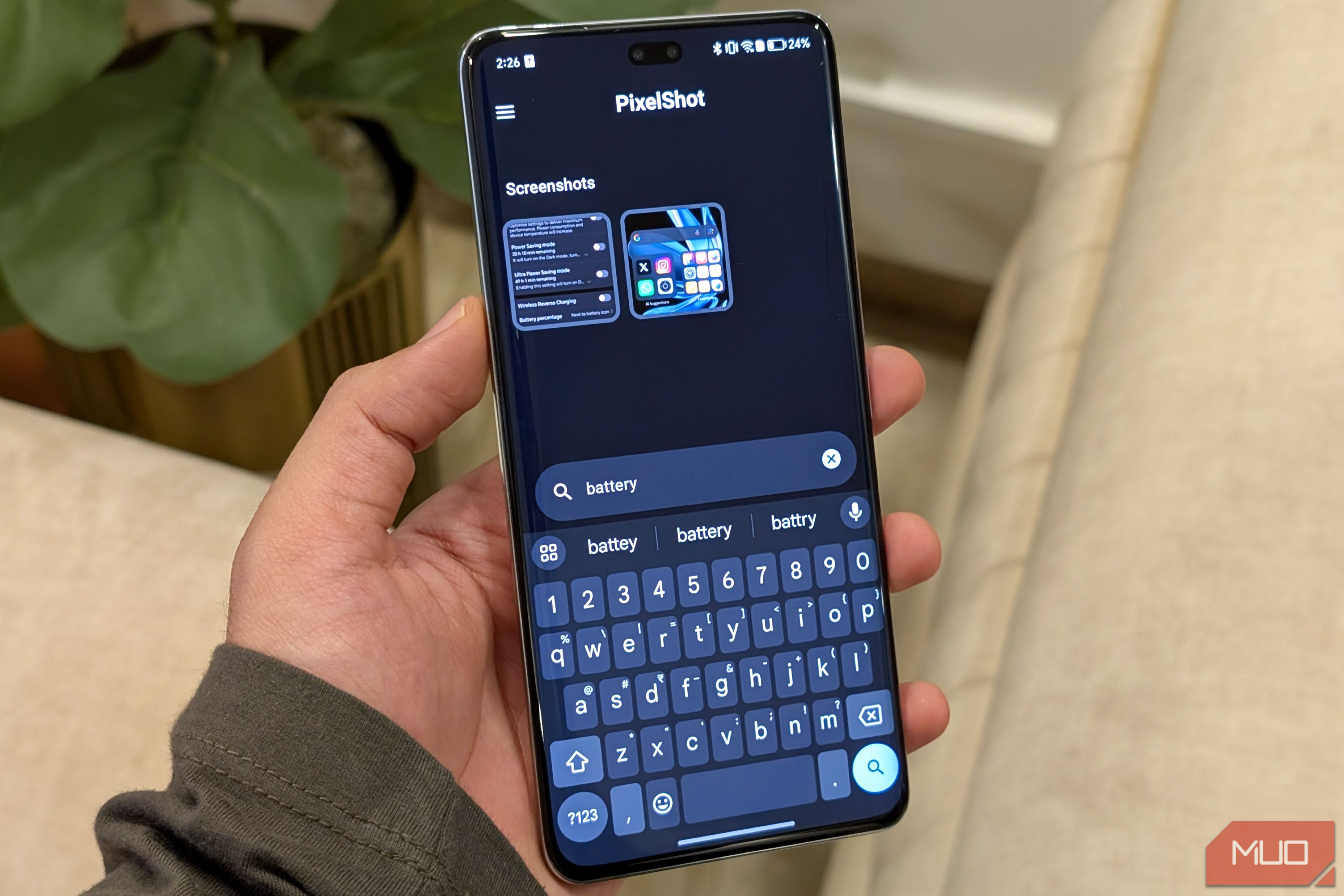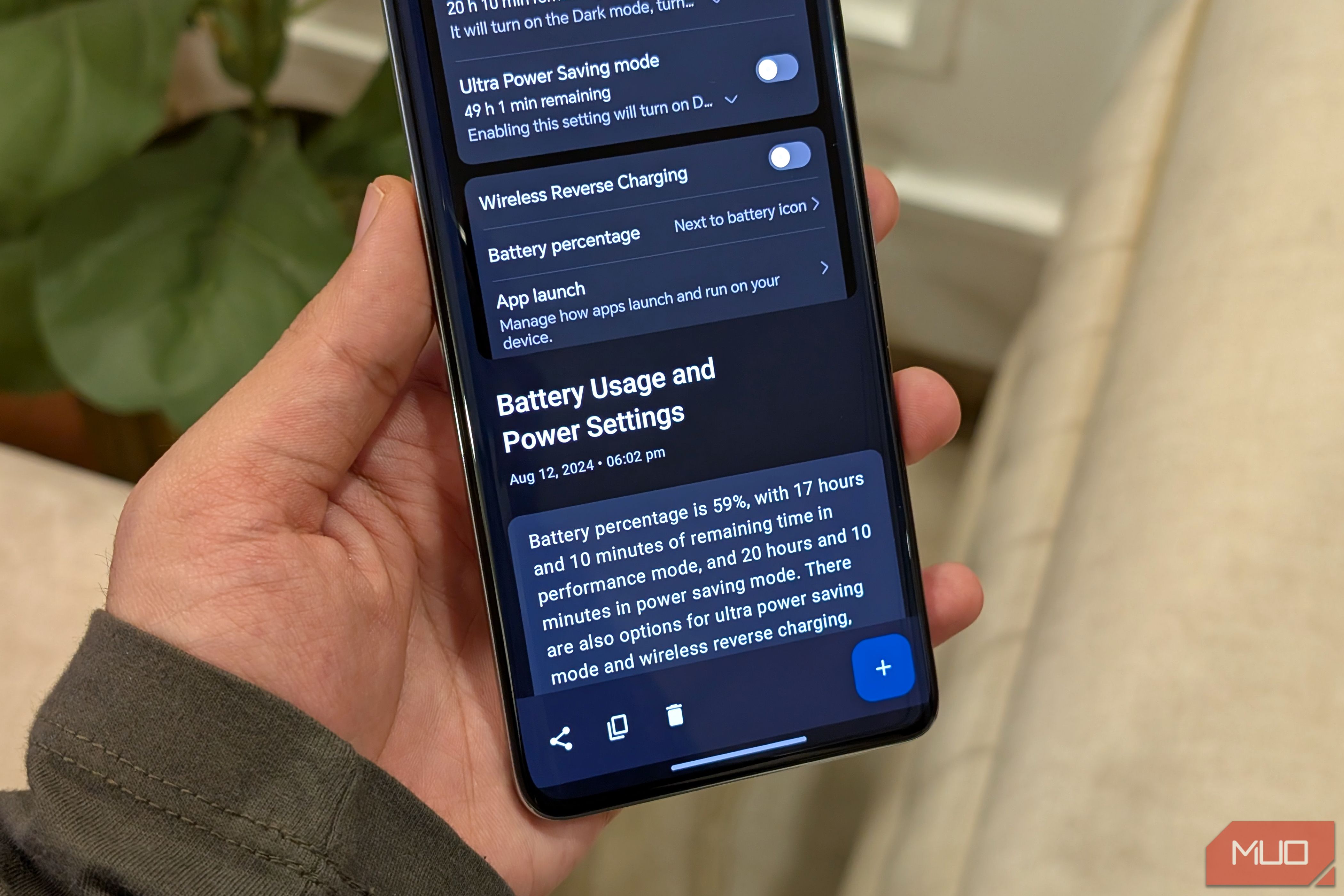One of the best parts of owning an Android is that most features don’t stay exclusive for long. A developer has now (sort of) brought one of the Pixel 9’s best features—the new Pixel Screenshot app—to other Android devices.
What is PixelShot?
If you’re like me, you take countless screenshots daily to save important information. But when it comes time to find a specific screenshot, it’s a chaotic process of scrolling through a sea of images.
That’s where PixelShot comes in. This app uses AI to analyze your screenshots, extract the text into searchable information, and organize it into a database so you can search for it later.
Let’s say you have a flight coming up, and you just take a screenshot of the flight details. Later, you can simply search for “flight” within the PixelShot app, and it will instantly show you the relevant screenshot and key details.
If this sounds familiar, it’s because it mimics the Pixel Screenshots feature found in one of the best AI smartphones of the year, the Pixel 9 series. Developed by Mehul Kanzariya, PixelShot is based on the same idea but works on any Android device running Android 11 or later. This brings the functionality beyond the Pixel ecosystem.
The app is free to download and ad-free in its current state. However, the developer has mentioned that if the user base grows significantly, he may introduce in-app purchases or ads to cover API costs.
It’s worth noting that the PixelShot app relies on a mix of on-device and cloud processing. It uses Google’s ML Kit SDK to extract text from images and uploads this text—not the screenshots themselves—to a cloud server where the Llama 3 8B Instruct AI model processes it to generate a summary.
Once the AI processes the text, it sends back a summary that is stored locally on your device. In contrast, Pixel 9’s Pixel Screenshots app uses one of Google’s small language models, Gemini Nano, to extract information from the screenshots on your device.
PixelShot only works with screenshots that contain text.
How to Use PixelShot
Start by downloading the app from the Google Play Store. On first launch, the app provides a brief overview of its features and how it works.
You’ll need to grant a few permissions for the app to work—photo access to read screenshots and notification access so it can work in the background.
Once set up, PixelShot will analyze all your existing screenshots. Going forward, all you need to do is take screenshots as usual.
The app works in the background, extracting text and using AI to make them searchable. However, since the app relies on cloud processing, the developer says you’ll need to open it occasionally to ensure text uploads.
What’s particularly useful about PixelShot is its ability to add notes to screenshots and organize them into collections for a more structured library. There is, however, a small limitation: PixelShot can only analyze screenshots that contain text.
For instance, if you take a screenshot of a T-shirt you want to buy during an upcoming sale, it won’t be searchable within the app—it only works with text-based screenshots.
That said, PixelShot is still an excellent way to try Pixel 9’s Pixel Screenshot feature on your existing Android device. While some users might have concerns about privacy, the developer assures that no screenshots are uploaded to the cloud. Only the extracted text is processed, and even that isn’t stored online.
I hope Google opens up Gemini Nano access to more developers in the future. Then apps like this could work entirely on-device. Until then, PixelShot is a fantastic way to try out this Pixel 9 feature on your current device—especially if you’re debating whether it’s worth upgrading to a Pixel 9 for this functionality.







